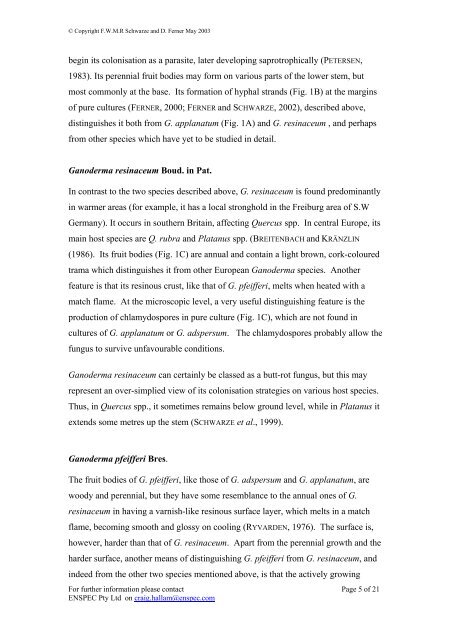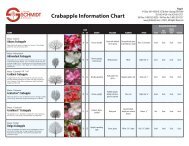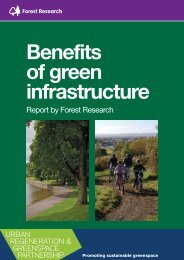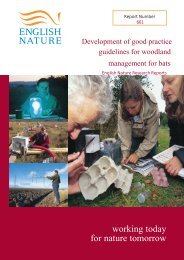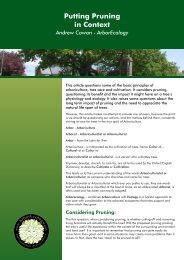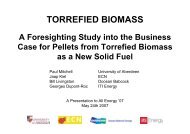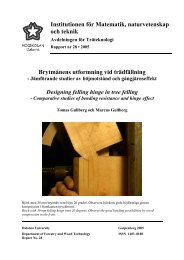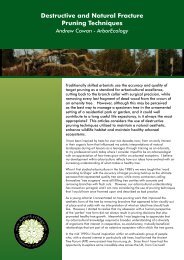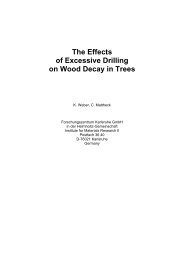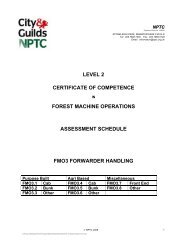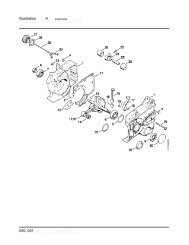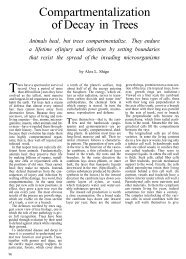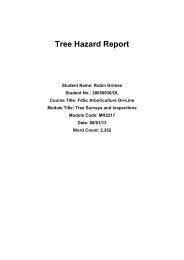Ganoderma on Trees.pdf - Arbtalk
Ganoderma on Trees.pdf - Arbtalk
Ganoderma on Trees.pdf - Arbtalk
You also want an ePaper? Increase the reach of your titles
YUMPU automatically turns print PDFs into web optimized ePapers that Google loves.
© Copyright F.W.M.R Schwarze and D. Ferner May 2003begin its col<strong>on</strong>isati<strong>on</strong> as a parasite, later developing saprotrophically (PETERSEN,1983). Its perennial fruit bodies may form <strong>on</strong> various parts of the lower stem, butmost comm<strong>on</strong>ly at the base. Its formati<strong>on</strong> of hyphal strands (Fig. 1B) at the marginsof pure cultures (FERNER, 2000; FERNER and SCHWARZE, 2002), described above,distinguishes it both from G. applanatum (Fig. 1A) and G. resinaceum , and perhapsfrom other species which have yet to be studied in detail.<str<strong>on</strong>g>Ganoderma</str<strong>on</strong>g> resinaceum Boud. in Pat.In c<strong>on</strong>trast to the two species described above, G. resinaceum is found predominantlyin warmer areas (for example, it has a local str<strong>on</strong>ghold in the Freiburg area of S.WGermany). It occurs in southern Britain, affecting Quercus spp. In central Europe, itsmain host species are Q. rubra and Platanus spp. (BREITENBACH and KRÄNZLIN(1986). Its fruit bodies (Fig. 1C) are annual and c<strong>on</strong>tain a light brown, cork-colouredtrama which distinguishes it from other European <str<strong>on</strong>g>Ganoderma</str<strong>on</strong>g> species. Anotherfeature is that its resinous crust, like that of G. pfeifferi, melts when heated with amatch flame. At the microscopic level, a very useful distinguishing feature is theproducti<strong>on</strong> of chlamydospores in pure culture (Fig. 1C), which are not found incultures of G. applanatum or G. adspersum. The chlamydospores probably allow thefungus to survive unfavourable c<strong>on</strong>diti<strong>on</strong>s.<str<strong>on</strong>g>Ganoderma</str<strong>on</strong>g> resinaceum can certainly be classed as a butt-rot fungus, but this mayrepresent an over-simplied view of its col<strong>on</strong>isati<strong>on</strong> strategies <strong>on</strong> various host species.Thus, in Quercus spp., it sometimes remains below ground level, while in Platanus itextends some metres up the stem (SCHWARZE et al., 1999).<str<strong>on</strong>g>Ganoderma</str<strong>on</strong>g> pfeifferi Bres.The fruit bodies of G. pfeifferi, like those of G. adspersum and G. applanatum, arewoody and perennial, but they have some resemblance to the annual <strong>on</strong>es of G.resinaceum in having a varnish-like resinous surface layer, which melts in a matchflame, becoming smooth and glossy <strong>on</strong> cooling (RYVARDEN, 1976). The surface is,however, harder than that of G. resinaceum. Apart from the perennial growth and theharder surface, another means of distinguishing G. pfeifferi from G. resinaceum, andindeed from the other two species menti<strong>on</strong>ed above, is that the actively growingFor further informati<strong>on</strong> please c<strong>on</strong>tact Page 5 of 21ENSPEC Pty Ltd <strong>on</strong> craig.hallam@enspec.com


